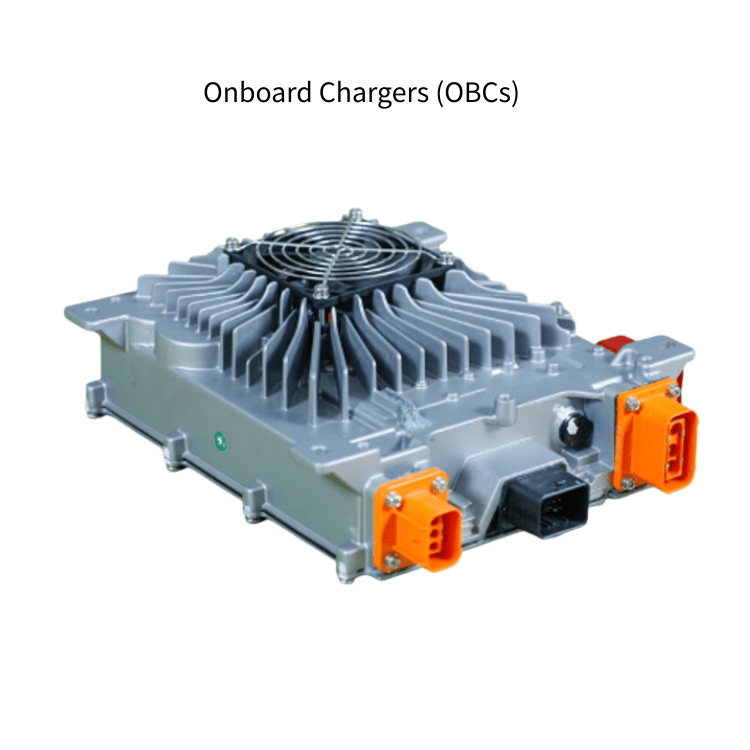
Introduction to Onboard Chargers (OBCs) and Their Role in Electric Vehicles
Onboard Chargers (OBCs) are a critical part of electric vehicles (EVs), converting AC electricity from the grid into the DC power needed to charge the vehicle's high-voltage battery. As EV demand grows, the need for faster and more efficient charging has increased, which brings new challenges to OBC designs. These challenges are primarily related to heat management and electromagnetic interference (EMI), both of which can severely impact the performance and lifespan of OBCs. This article discusses the common problems associated with OBCs and how nanocrystalline cores provide an effective solution.
The Key Problems in OBCs: Heat and Electromagnetic Interference
-
Overheating and Performance Degradation
A major concern for OBCs is heat, which results from the energy losses that occur during power conversion. Excessive heat can cause components to degrade faster and force the system to throttle its performance to avoid damage. This can reduce the overall efficiency of the vehicle's charging system and lead to increased failure rates in the power electronics. For instance, when operating at maximum capacity, OBCs can experience failure rates that are 40% higher than at normal operating levels, primarily due to overheating.
-
Electromagnetic Interference (EMI)
High-speed switching, a characteristic feature of OBCs, generates EMI. This interference can disrupt the vehicle's other sensitive electronic systems, such as communication buses and infotainment units, leading to potential malfunctions. Modern power semiconductors, like GaN (Gallium Nitride) and SiC (Silicon Carbide), operate at high frequencies, generating electromagnetic noise in the 2.4 GHz and 5 GHz bands, which requires highly efficient filtering solutions.
How Nanocrystalline Cores Solve the Heat and EMI Issues
-
Reducing Heat Generation: The Role of Nanocrystalline Cores
Nanocrystalline cores have an exceptional ability to reduce core losses, which are responsible for generating heat. Their grain structure, which is much smaller than conventional magnetic materials, results in significantly lower core losses, reducing heat generation by up to 1000 times compared to traditional materials. This reduction in heat allows OBCs to operate at higher power levels without the need for bulky cooling systems, which leads to a more compact and efficient design.
-
Suppressing Electromagnetic Interference (EMI)
Nanocrystalline cores excel in EMI suppression due to their high permeability. This allows them to absorb high-frequency noise over a broad range of frequencies, making them ideal for use in common-mode chokes (CMCs) designed to filter out EMI. By improving noise suppression, nanocrystalline cores ensure that the OBC can meet stringent EMC standards and maintain the integrity of the vehicle's electronic systems.
Nanocrystalline Cores vs. Traditional Ferrite Cores: A Comparative Analysis
| Parameter | Nanocrystalline Cores | Ferrite Cores |
|---|---|---|
| Saturation Flux (Bs) | 1.2T | 0.4T |
| Max Operating Frequency | ≥1 MHz | <200 kHz |
| Curie Temperature | ∼570°C | ∼120°C |
| DC Bias Performance | >80%@100 Oe | 20%@100 Oe |
| Size/Weight | 50% weight, 75% size reduction | No significant reduction |
| Cost | Lower system-level cost | Higher due to additional cooling components |
The Future of OBC Design with Nanocrystalline Cores
Nanocrystalline cores are poised to revolutionize the design of onboard chargers for electric vehicles. By addressing the critical challenges of overheating and EMI, they enable the development of more efficient, compact, and reliable OBCs. This innovation is key to advancing EV technology and supporting the growing demand for faster, more efficient charging solutions.